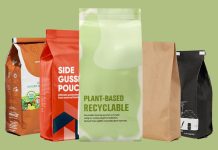In the world of packaging, where protection, presentation, and preservation are paramount, heat shrink wrap emerges as a versatile and efficient solution. This article delves into the intricacies of heat shrink wrap, exploring its applications, benefits, and the diverse industries that have embraced this innovative packaging technique. At its core, heat shrink wrap is a type of plastic film that, when exposed to heat, shrinks tightly over whatever it is covering.
This versatile material is typically made from polyolefin or PVC and comes in various thicknesses and sizes. The magic happens when heat is applied the wrap conforms to the shape of the object, creating a secure and protective barrier. While Heat Shrink Wrap – KEEPTOP Packaging offers a myriad of advantages, the environmental impact of plastic packaging cannot be ignored. In response to growing concerns about plastic waste, there is an increasing emphasis on developing sustainable alternatives.
How Does The Shrink Process Work?
The heat shrink process involves wrapping the material around the item to be packaged and then applying heat. This heat can be applied using a heat gun or a heat tunnel. As the material heats up, it shrinks, creating a tight seal around the item. This not only secures the contents but also provides a professional and visually appealing finish.
Applications across Industries: Where Heat Shrink Wrap Shines
The journey towards efficient and sustainable packaging involves making informed choices that balance the needs of the business with the responsibility to the planet. Heat shrink wrap, when used judiciously and in consideration of environmental concerns, can play a pivotal role in the evolving landscape of packaging solutions.
As businesses weigh the benefits of heat shrink wrap, it’s essential to consider not just its immediate advantages in packaging efficiency but also its long-term impact on environmental sustainability.
Food and Beverage Industry
In the food and beverage industry, where maintaining freshness is crucial, heat shrink wrap is a game-changer. From bundling fruits and vegetables to sealing meat products, the tight seal created by the shrink wrap protects against contaminants and extends the shelf life of perishable goods. Additionally, it provides a transparent barrier, allowing consumers to see the product while ensuring hygiene and safety.
Manufacturing and Retail
In the manufacturing sector, especially for electronics and small components, heat shrink wrap ensures precision in packaging. The ability of the material to conform tightly to irregular shapes and contours provides a secure and protective layer. This is particularly valuable in retail packaging, where products need to be both secure and visually appealing.
Wrapping up Efficiency
In the construction industry, heat shrink wrap has found applications in encapsulating scaffolding, creating temporary weather barriers, and protecting construction materials from the elements. The material’s durability and resistance to environmental factors make it a reliable choice for outdoor applications, ensuring that construction projects proceed efficiently even in challenging conditions.
Pharmaceuticals
For the pharmaceutical sector, where product integrity and safety are paramount, heat shrink wrap plays a crucial role. It is often used for tamper-evident packaging, ensuring that consumers can easily identify if a product has been opened or compromised. This adds an extra layer of protection to pharmaceutical products, assuring consumers of the authenticity of the contents.
Conclusion
In the complex landscape of packaging solutions, heat shrink wrap stands out as a versatile and efficient choice. Its applications span across diverse industries, providing secure, tamper-evident, and visually appealing packaging. While the environmental impact of plastic packaging is a consideration, ongoing innovations in recyclable and biodegradable alternatives offer a promising path toward a more sustainable future.














